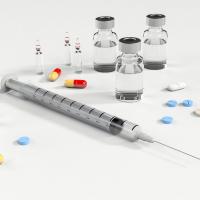To date, three medications are approved by the FDA for long-term treatment of opiate dependence.
Two of these, methadone and buprenorphine, are “opioid agonists” that mimic the effects of the body's endorphins. They substitute for the abused opiate and are effective because they suppress craving and prevent opiate withdrawal.

The third medication, naltrexone, is an opioid antagonist.
Naltrexone works by blocking the effects of opiates.
In people who do not take opiates regularly, naltrexone is safe and generally well-tolerated.
Because many addicts can't go a week without opiates, getting patients started on naltrexone is difficult.
To prevent severe naltrexone-precipitated opiate withdrawal, the addict needs to have been off all opiates for at least one to two weeks. This will avoid precipitating opiate withdrawal, an experience all opiate addicts dread.
Keeping them on naltrexone is also hard. Patients can relapse if they skip even one day. Once they return to using opioids daily, they must go through the same waiting process before restarting oral naltrexone.
Naltrexone was invented in 1963 by Endo Laboratories. In 1984 the FDA approved naltrexone to treat addictions to heroin, morphine, and oxycodone and other opiates. In 1995 the FDA approved ReVia™, the pill form of naltrexone, to treat alcohol and opiate abuse. In 2010 the FDA approved Vivitrol™, a long acting injectable form of naltrexone, for alcohol abuse and in 2016 the approval was extended for opiate addiction.
Naltrexone is very similar but not the same drug as naloxone. Naltrexone is taken orally. Naloxone only works if given by injection (or by placing it in the nose) but it does not work if given orally. Naloxone is used to treat an opioid overdose.
According to the National Institute on Drug Abuse (NIDA), opioids include heroin, synthetic opioids such as fentanyl, and prescription pain relievers such as oxycodone (OxyContin®), hydrocodone (Vicodin®), codeine, morphine, and others. And use of opioids—both legal and illegal—is increasing rapidly. Some of these—the pain relievers—are highly effective, but cause euphoria that can lead to addiction and can lead to overdose and death.
Medications approved to treat opioid abuse include two synthetic opioids, buprenorphine and methadone. These are known as “opioid agonists.” They work by activating opioid receptors in the brain. These are the same receptors activated by heroin, oxycodone, and other substances. Both medications are highly effective, but have side effects that doctors and patients need to consider.
The third approved medication is naltrexone, an “opioid antagonist.”
The NIDA also notes that medications to treat opioid abuse are “underutilized.” The oral (pill) form of naltrexone was not as successful for opioid users, many of whom have problems maintaining a regular medication schedule. In 2010 the FDA approved Vivitrol™, an injectable version of naltrexone. Since it is injected once a month, it is easier for some patients to maintain.
There are two disadvantages with injectable naltrexone. First, patients still need to visit a doctor's office for a monthly shot. If they don’t, relapse can occur rapidly. Second, the shot is a big one. It needs to be given in a deep muscle—and it's painful.
For opiate addiction, naltrexone has been most successful when given to people leaving jail. Contrary to popular belief, most inmates don’t have easy access to drugs. Since they don’t receive any treatment while in jail, they suffer rapid relapse when they leave. Because they have lost some tolerance to opiates while incarcerated, they are at a high risk of overdose and death. In this population Vivitrol™ has been shown to substantially decrease the risk of overdose and death.
Additionally, the FDA noted that naltrexone is even more effective on patients who are already emotionally and psychologically committed to reducing opiates. The FDA recommends that patients who use naltrexone combine it with behavioral counseling for maximum effectiveness.
Naltrexone is one of the safest medications available to help combat addictive behavior, with few of the drastic side effects (e.g., nausea, vomiting) caused by other compounds. Since it is metabolized by the liver, it is not recommended for patients with severe liver problems.
Conclusion: Of the medications available to treat opioid abuse, naltrexone is a good choice for many people. It is effective, safe, and is not addictive. Abuse of opioids is increasing in the United States. If more people knew about naltrexone, more lives could be saved.
Get Smart about Recovery™
